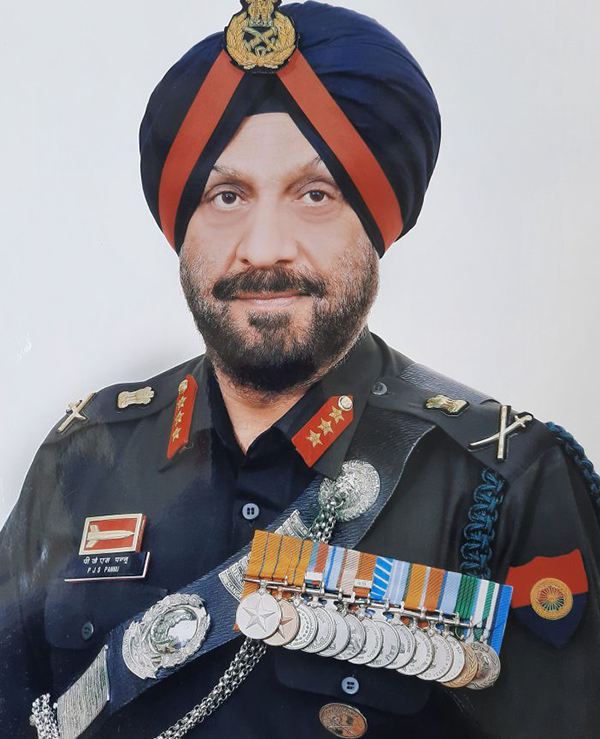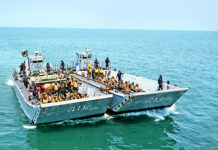

We are into technology-based warfare. This has been dictated by the new possibilities that the new industrial age (Industry 4.0 – the information age) has offered to us. Literally speaking, anyone who can achieve information dominance will be able to a take a leadand master the battlefield.
ALSO READ: DIGITAL TRANSFORMATION – Challenges of Digital Transformation
The next generation is actually moving faster. Revolution in Technology is racing ahead of the Revolution in Military Affairs. As innovation and technology grows, we would need to adapt to these new fields. There is a need for the military to guide and customize technology. Trouble is, India has been deprived of technology for very long. We have been importing systems from different origins, of varying vintage because of which compatibility is affected. Equipment compatibility is essential for digital and Network Centric Operations. Legacy systems also cause problems due to high Cost and long shelf life – replacement and upgradation issues complicate matters. Though we have trade specialization, we are not guiding trade through military professionalism. As a result, while attempts are being made to keep up with technology, the legacy systems that we keep bringing in and changing with half solutions have created paralysis. Military decision makers have unfortunately been the weakest link in this chain.
Digitisation and Networking
With Digitisation and Networking we are getting into smart systems, where the man, Machine (digitized platforms and systems) and the weapon system (shooter) are synergised. To fight a battle in the Tactical Battle Area (TBA) the war must be brought into the War Room to serve as ‘strategic vantage point’. In the old days, senior commanders would go to a hill top to see the battle unfolding and give decisions from there. It is really possible today, if we can bring in the required systems, to bring the war into the war room. The OODA loop can be then literally automated. That does not mean shortening the OODA loop, which is a step lower. Automation of OODA means your algorithms have to be thought through very well by the military professionals. Industry can only make it possible provided the military professionals can guide them about the outcome required through technology in the battlefield. Hence, military commanders must deeply get involved with technology, which is ubiquitous in connectivity. That is how success on the battlefield can be achieved at all levels and not only at each domain – operations, intelligence, logistics etc. where we have created verticals that are not compatible – as also,do not achieve economy of effort.
Information & Decision-making
Information must be provided in time to be useful. It has to be also correct and accurate. Decisions must be aided but not interfered with. Technology may replace humans but not override them. Artificial Intelligence (AI) makes a case for robotics to become the biggest outsourcing case for the most dangerous jobs in the world.
Technology must assist in guarding our borders but, today, are we talking about borders as frontiers that are conventional in nature – where you fight physically? or undertake hybrid wars? Today, the borders are redrawn. Literally speaking, borders are limited only by our imagination. In fact, the mind is the first target – psychological warfare, where mind is the key. When mind is manipulated, more so, of those who sit in the nerve center, then anything can be manipulated. Bad news can affect anybody’s morale. Good news can be made to look bad by simple truth reported inaccurately. Once morale is sunk – the military is a dead machine.
ALSO READ: DIGITAL TRANSFORMATION – Transformation For Future War
The soldier must get into technology but he should not be cluttered with it. We must make sure that it is simple for him to adapt and to fight, rather than create a problem and frustrate him. We have an example in the Battlefield Management System (BMS) – which created more clutter with plethora of hardware and wiring around of soldier. At some point we realized that we had to dump it since it was getting too cluttered and logistically inconvenient.
Another issue is data, based on which we run AI engines, but we need to own AI engines. We cannot allow them to be operated by someone else. Security is the prime concern. When you own secure systems, only then you can you trust them. If not, there is no assurance whether the systems are working for you or for your adversary. You could be fed with information which is tweaked and it would misguide you to take a wrong decision.
In high tempo operations speed is of paramount importance, we have to have take immediate and instant decisions, where no latency is permitted. A military system that is sluggish will lose the first draw. More so, the Nerve Center will be targeted if you lose the first draw in battle.
India has been investing in technology but most military commanders have unfortunately not been able to absorb it into ‘Military Use Cases’.Field commanders have left technology to the technical experts and have no appetite and patience to focus on harnessing it.Thereisnoalignmentbetweenthemillennialworldof technology and analog doctrines of the past. It is up to the senior leadership to realize that in the information age we have to integrate systems at the strategic level too.
Common Operational Picture
We are making a constant shift in our thought process on our force structures. Certain models are made to integrate three services. This would remain a far cry when intra-service digital integration is lacking. We need to draw models for future battles which are technology based. Technology will not be able to correlate with frequent changes in organizational models. Some models enforced unfortunately are based on knee jerk ideas flowing out of analog thoughts. We are good at creating silos – each Service makes its own system, all stakeholders must sit together and those who need to see the Common Operational Picture (COP), need to have a common agenda. In the absence of a common agenda, you cannot have a COP. You cannot make a system in isolation and expect others to adopt it without involving them in the conceptual, drawing board,evolutionaryand development stages.
Bandwidth Requirements
As technology and data connectivity become the prime focus, we have not been able to understand how much data and bandwidth is required for each module of a Tactical or Combat Unit. The US Army has worked out how much bandwidth is required for a Special OperationsTeam or a Combat Team and how it will grow over a period of time. Similarly, we need to create a Tactical Combat Module for giving them data and bandwidth for their systems that they will acquire and operate in the future too. As I understand, it will need flow of terabytes of data to run digital platforms in a TBA.
The Future
Future military systems will be driven by PME, ie, Power, Materials and Electronics. With the size of data and intense connectivity required both in static and mobile communication segmentnow and we will need sufficient power (batteries, generators, renewable and revolutionary energy) to ensure all systems have stable power supplies. Similarly, we need to invest in materials. Currentlymost of the military and strategic materials our industry is using are imported. Even if the design is indigenous, we need to own material sources.
We must understand electronics thoroughly if we are to talk about reliability, ruggedization and miniaturization. We need to secure and own digital systems and hardware. Since we do not have our own fabrication of microchips, we need to scale up testing facilities for checking integrity of imported systems. We also need to look ahead digitally and stabilise our organisation, doctrines and policies. If these changesare often, we will never have the technology fixated to a point.
We need toidentifybandwidthneeds of tactical and support units. Once our technological baselines are clear, it would be easy to get into procurement/ R&D/manufacturing and budgeting. Today it is the budget that provides a baseline for decisions not congruent to Battle field challenges that are faced with high-tech adversaries.
We need to create a good eco-system between the fighting and supporting entities, that would fight an integrated war, not only in conventional domain but also in hybrid, non-contact and non-kinetic battle fields.
Use of cyber connectivity, network connectivity, information intelligence, AI and robotics means we must be clear and make up our mind about what we want in the next 7-10 years. That will mean a stable organisation with practical and soldier friendly digitally integrated systems in place. This would mean that Military needs to think half a notch ahead of industry which is at 4.0. Therefore, to move ahead, Military 4.5 standards need to be implemented.
Based on the Introductory Remarks made at Digitisation& Networking in the Armed Forces 2020 Webinar, 23 Nov 2020


















[…] Twitter WhatsApp Linkedin Email Print Previous articleDIGITAL TRANSFORMATION – Imperatives For Network-centric Operations IMR […]
[…] DIGITAL TRANSFORMATION – Imperatives For Network-centric Operations […]
[…] DIGITAL TRANSFORMATION – Imperatives For Network-centric Operations […]